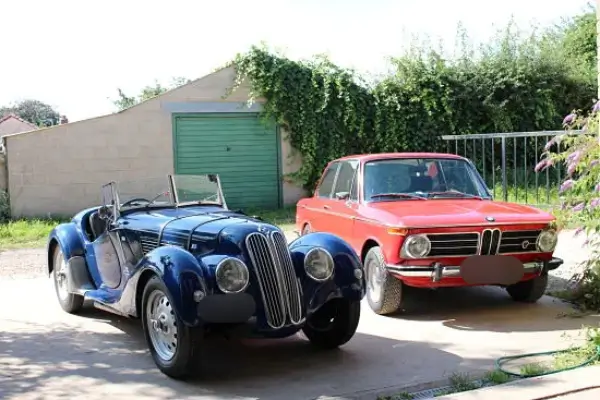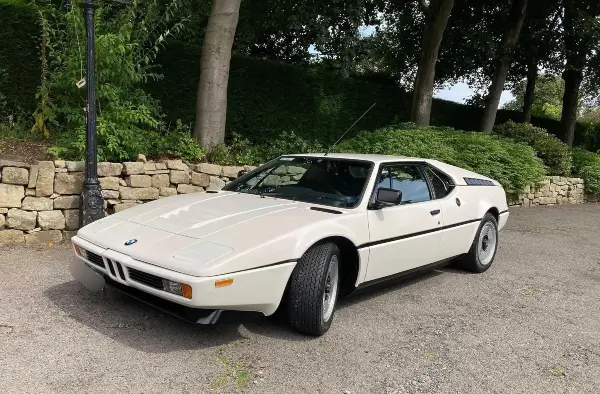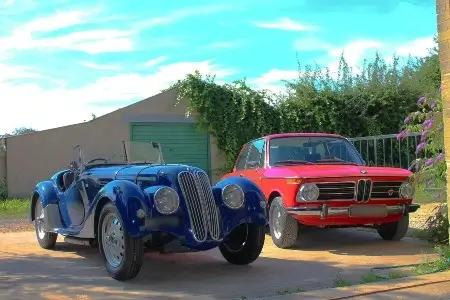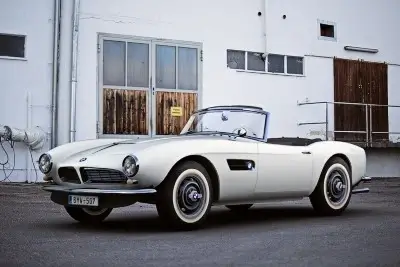-
- BMW E30 M3 Tyres
- BMW Issetta Tyres
- BMW M1 Tyres
- BMW Z1 Tyres
- BMW Neue Klasse Tyres
- BMW 1500 Tyres
- BMW 1600 Tyres
- BMW 1602/1502 Tyres
- BMW 1800, 2000 Tyres
- BMW 2000C Tyres
- BMW 2002 Tyres
- BMW 3 Series Tyres
- BMW E3 New Six Tyres
- BMW E9 Tyres
- BMW 5 Series Tyres
- BMW 501 Tyres
- BMW 503 Tyres
- BMW 507 Tyres
- BMW 6 Series Tyres
- BMW 7 Series Tyres
- BMW 700 Tyres
- Pre War BMW Tyres
BMW Tyres
Classic BMW Tyres
If your car is not listed, don't panic! Please give us a call on:
01302 711 123
or
Email: sales@longstonetyres.co.uk
BMW History

BMW's origins may be traced back to Karl Rapp and Gustav Otto. At the request of the government, the Flugmaschinenfabrik Gustav Otto firm amalgamated with Bayerische Flugzeug-Werke AG (BFW) in 1916. In other news, the Rapp Motorenwerke corporation was renamed Bayerische Motoren Werke GmbH in 1917 and was then changed into an AG (public limited company) in 1918. In 1922, BMW AG handed its engine construction activities – including the business and brand names – to BFW. As a result, the date of BFW's creation, 7 March 1916, has gone down in history as the founding date of BMW as we know it.
Since 1917, the BMW symbol, which integrates the Bavarian state colours, has been displayed on all of the company's goods. The insignia initially appeared in the company's advertising at the end of the 1920s as a whirling propeller - a shape that has been frequently reworked since.
Following the embargo on the production of aero-engines, railway brakes and inboard engines were built after the war. After the firm was sold to Knorr Bremse AG in 1920, banker Camillo Castiglioni purchased engine production, as well as the staff and manufacturing facilities, the brand, and the blue and white emblem. He subsequently transferred all of his assets to "Bayerische Flugzeuge-Werke AG" (BFW). The next year, the firm transferred to BFW's production facilities at Munich's Oberwiesenfeld airport. The BMW Group's primary factory and headquarters are still located here today.
BMW established automotive manufacturing in 1928 when it purchased the Fahrzeugfabrik Eisenach firm. Until the outbreak of World War II, all BMW automobiles were manufactured at this facility in the German state of Thuringia. The first BMW compact automobile was constructed under licence from the Austin Motor Company in 1929, but it was replaced by company designs in 1932.

During the National Socialist period, BMW evolved from a mobility industry to a weapons firm, becoming one of the most significant firms in the German war economy. Although motorcycles and vehicles were still manufactured, the aero-engine business line accounted for the lion's share of the company's revenues. To accommodate the demand for weaponry, new locations were built and manufacturing was dramatically increased.
Following WWII, allied armies requisitioned and occupied the BMW factories. Machines and tools were disassembled because BMW was categorised as an arms business. Milbertshofen, like the Berlin facility, began "stopgap" manufacturing, primarily of domestic appliances, beginning in 1945. BMW's first postwar vehicle, the 501, was produced beginning in 1952. It was a big saloon that could seat up to six passengers and was powered by an improved version of the six-cylinder engine used in the pre-war BMW 326. The BMW 501 was not a commercial success as a luxury automobile, but it did reestablish BMW's reputation as a builder of high-quality, technically fascinating vehicles.
As the 1950s continued, the company's position grew increasingly perilous. Daimler-Benz made a restructuring offer to BMW in late 1959, with a time constraint for acceptance. However, during the Annual General Meeting on December 9, small shareholders and workers rejected this offer. Herbert Quandt decided to increase his share package as a result of their endurance and his faith in the BMW 700. BMW was reformed under Quandt's management the next year after the government granted some temporary financial help.
The debut of the BMW New Class compact sedans in 1962 marked the start of BMW's status as a premier maker of sport-oriented automobiles. BMW increased its lineup throughout the 1960s, introducing coupe and luxury sedan models. The BMW 5 Series mid-size sedan line debuted in 1972, followed by the BMW 3 Series compact sedans in 1975, BMW 6 Series luxury coupes in 1976, and the BMW 7 Series big luxury sedans in 1978. In 1978, the BMW M division produced its first road vehicle, a mid-engine supercar. The BMW M5 debuted in 1984, while the BMW M3 debuted in 1986. BMW also debuted its first V12 engine in the 750i luxury sedan in 1986.


